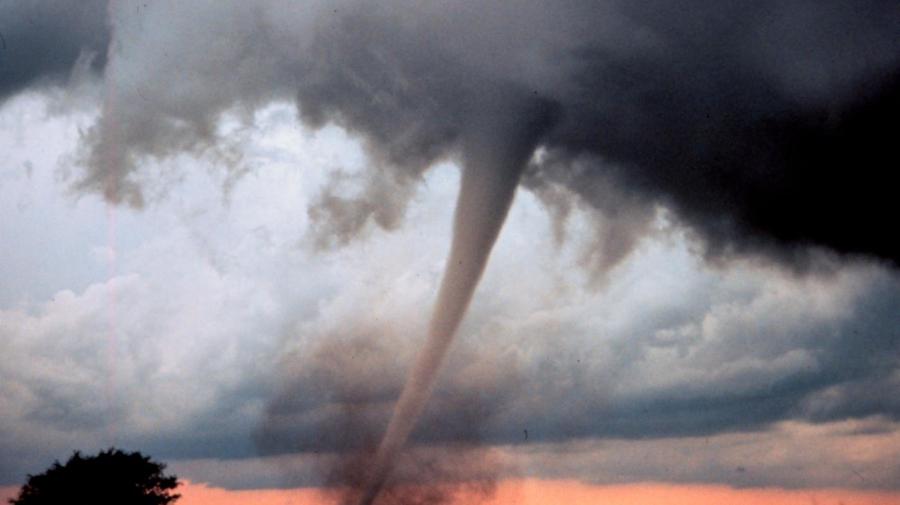What Causes a Tornado?

Strong warm updrafts carrying large amounts of moisture interacting with fast-moving cool, dry winds above cause tornadoes when the two air currents begin to swirl around each other and reorient toward the ground. The moist updraft is always of a type that forms large storm clouds as it ascends and the water vapor in it condenses.
The interaction between the two air currents must be extremely energetic to form a tornado. It requires the winds the warm updrafts interact with to be moving 150 miles per hour or more. Initially, the swirling air from the interaction of the two air currents is known as a mesocyclone and is oriented horizontally rather than vertically. The column of air formed by this phenomenon grows narrower as the wind speed inside it increases. If the wind shear causes the air column to reorient to a vertical position, it can stretch out to meet the land and form a tornado.
Tornadoes always begin in powerful thunderstorms. The most likely type of storm to produce a tornado is the most powerful type, known as a supercell. The cumulus clouds that form these storms are usually created by air that is at least 75 degrees Fahrenheit in temperature. Warm air is lighter than cool air, so the air is inherently unstable when there is cold air above and warm air below.





